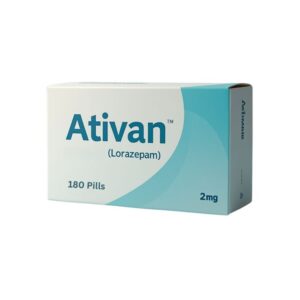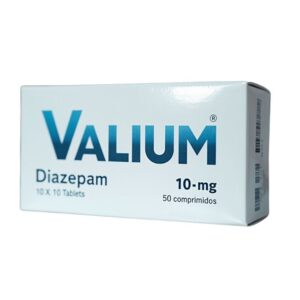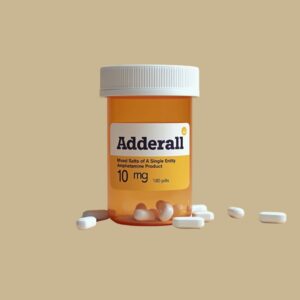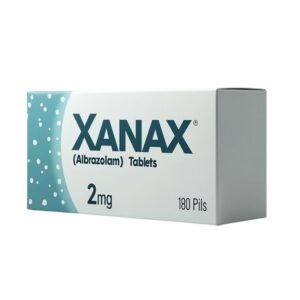Clonazepam (Klonopin)
Generic Name: Clonazepam
Brand Names: Klonopin (U.S.), Rivotril (international)
Drug Class: Benzodiazepines
Controlled Substance: Schedule IV (U.S.)
Available Forms: Oral tablets, orally disintegrating tablets (ODTs)
Strengths: 0.5 mg, 1 mg, 2 mg
Overview
Benzodiazepines like clonazepam have long-lasting effects and are mostly used to treat seizures and anxiety. Clonazepam has been around since the 1970s and is often prescribed for people who have seizures or panic disorders. It is also sometimes used to treat movement disorders or acute manic episodes. It works by making gamma-aminobutyric acid (GABA) work better. GABA is the brain’s main neurotransmitter that stops signals from sending. By making GABA work better at calming down the body, clonazepam helps stop abnormal electrical activity in the brain. This process helps people relax, feel less anxious, and avoid seizures.
What Clonazepam Is Used For
Clonazepam can be used for many medical reasons, such as
- Seizure Disorders
- Not having seizures
- seizures with myoclonics
- Syndrome of Lennox-Gastaut
- Partial seizures (as an extra treatment)
- Panic Disorder
- With or without agoraphobia
- Movement Disorders
- Being restless in the legs (RLS)
- Akathisia
- Difficulty moving slowly
- Sleep Disorders
- Problems with REM sleep behavior
- Anxiety-related insomnia (not on the label)
- It was used briefly with mood stabilizers (off-label).
- We briefly used it with mood stabilizers (off-label).
Mechanism of Action
While clonazepam works on the GABA-A receptor complex, it makes the brain’s inhibitory effects of GABA stronger. It causes neuronal hyperpolarization by making it easier for chloride ions to enter neurons. This procedure lowers excitability and calms down brain circuits that are too active. This mechanism works to stop seizures and calm people down, which makes it a useful treatment for many neurological and mental health problems.
Dosage and Administration
It is critical to take clonazepam exactly as your doctor tells you to. The dose changes based on the condition being treated, the person’s age and weight, and how well they respond to treatment. To Help Adults with Seizure Disorders:
- Starting dose: 0.5 mg to 1.5 mg/day, spread out over the day.
- Maintenance dose: 2 to 8 mg/day, split up.
- Dosage limit: 20 mg per day
For Adults with Panic Disorder:
- The first dose is 0.25 mg twice a day.
- Dosage goal: 1 mg per day, spread out over the day
- To avoid too much drowsiness or withdrawal symptoms, dose changes should be made slowly.
For kids (seizures):
- The dose is based on your age and weight.
- 0.01 to 0.03 mg/kg/day, usually spread out over several days
Note: To avoid withdrawal symptoms, always lower the dose slowly when stopping.
Onset and Duration of Action
- Start: Twenty to sixty minutes after oral administration
- Levels at their highest: 1 to 4 hours
- Half-life: 18 to 50 hours (longer in older people or people whose livers don’t work right).
This one requires fewer doses than benzodiazepines due to its longer half-life.
Key Benefits
- Long-lasting effects provide relief from anxiety and seizures over an extended period.
- Effective in epilepsy that doesn’t respond to treatment
- Can lessen the number and severity of panic attacks
- Due to potency, low daily dose needs
- More quickly acting than many common antidepressants or seizures medicines
Side Effects
Most people can handle clonazepam well when they take it as prescribed, but it can have side effects. Common Side Effects:
- Being sleepy
- Feeling sick
- Weakness
- Problems with coordination
- Problems with memory
- Trouble seeing
- Saliva production goes up
Serious Side Effects:
- Low oxygen levels in the blood (especially when using opioids or alcohol)
- A suicidal ideation or act
- Strong allergic reactions
- Behavioral changes, like becoming angry or having hallucinations
- Withdrawal signs (seizures, tremors, and sweating) if stopped suddenly
If you have any serious symptoms, you should get emergency medical help right away.
Warnings and Precautions
- Crippling Addiction: Clonazepam can make you physically or mentally dependent, especially if you use it for a long time or in large amounts.
- Withdrawal Risk: Quitting all of a sudden can cause severe withdrawal symptoms like rebound anxiety, seizures, and psychosis.
- Warning for pregnant women: Category D: Risk of harm to the fetus. Do not use unless you have to. Could lead to neonatal withdrawal syndrome.
- Driving or operating machinery: Don’t do anything that needs your full attention until you know what the effects are.
- Liver Impairment: You may need to change your dose.
- Patients over 65: More likely to experience side effects like drowsiness and falls; use with care.
Drug Interactions
Clonazepam might not work well with the following substances:
- Opioids: Raise the risk of sedation and breathing problems that could be life-threatening
- Alcohol: It makes you sleepy, so you should stay away from it.
- Different types of CNS depressants, like barbiturates, antipsychotics, and sleep aids
- Anticonvulsants, like phenytoin and valproate, may not work as well as they used to.
- Antidepressants and SSRIs: Keep an eye out for serotonin imbalance or more drowsiness.
Always let your doctor know about all of the medicines, vitamins, and supplements you are taking.
Storage and Handling
- Place in a cool, dry place (20–25°C or 68–77°F).
- Store in a safe, childproof container.
- It is illegal and dangerous to share with other people.
Safely get rid of unused medicines by following the instructions given by the pharmacy or community.
Clonazepam vs. Other Benzodiazepines
| Feature | Clonazepam | Diazepam | Lorazepam |
| Duration | Long-acting | Long-acting | Short/intermediate |
| Onset | Moderate | Fast | Fast |
| Seizure Use | Yes | Yes | Yes |
| Anxiety Use | Yes | Yes | Yes |
| Half-Life | 18–50 hours | 20–100 hours | 10–20 hours |
Clonazepam is usually the best benzodiazepine for long-term seizure control and daily anxiety treatment. Other benzodiazepines might work better for short-term or acute episodes.





